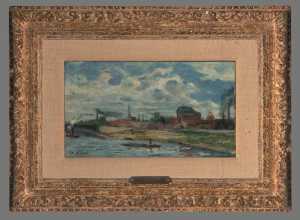Paul Gauguin spent part of his youth in Peru, the country of his mother. In 1871, Gauguin became a stockbroker, but he was also a Sunday painter with considerable interest in the work of the impressionists. In 1884, Gauguin gave up his job and travelled to the coast of Normandy to become an artist. In 1888 he met Sérusier and Bernard who aroused his interest for primitive and non-western art. In a reaction against the Western civilisation, Gauguin went to Tahiti, to live there among 'unspoiled' people. He also searched for a purer painting style that was free of Western traditions and conventions. His use of non-natural colours and shapes had a considerable influence on the development of the expressionism by the artists of a later generation.

Paul Gauguin
Parijs 1848 - Atuona 1903






